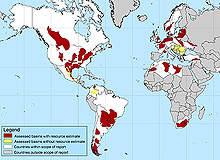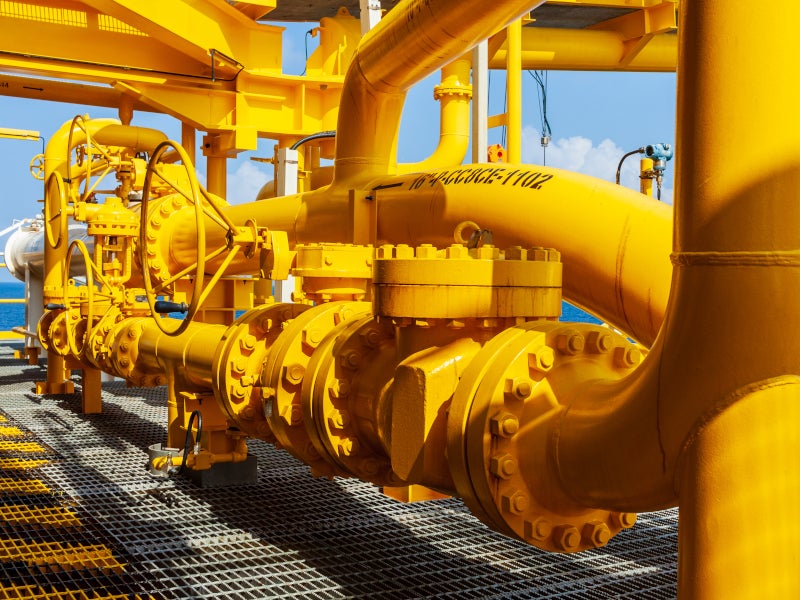
Improvements in technology in recent years have allowed oil and gas companies to exploit – or a least think about exploiting – shale gas in large economic quantities for the first time since exploration of the resource began over a century ago.
Coupled with the supposed financial benefits, the need to secure energy supply has driven countries such as the US, Russia, Canada and more recently, the UK and China to support the now more attractive activity of shale gas production.
But while some companies have dubbed the unconventional substance as a game-changer which could transform the dynamics of the energy sector, others worry that it could pose dangerous risks to gas prices, the environment and the demand for conventional supplies.
United front
North America is the biggest producer of shale gas in the world, and with 109trn m³ potential reserves at its fingertips, the continent isn’t about to run out of supplies.
Companies and analysts in the industry have predicted that shale gas will supply as much as half the natural gas production in North America by 2020, and Southwestern Energy Company president and CEO Steven Meuller believes this to be a realistic forecast, “We think this is very feasible. Today, shale gas accounts for approximately 23% of US natural gas production.”
“Just look at the US rig count numbers; over 60% of the rigs running in the country are drilling in oil and gas shales. If you want to be more specific, over 70% of natural gas rigs are drilling in the shales,” adds Meuller.
How well do you really know your competitors?
Access the most comprehensive Company Profiles on the market, powered by GlobalData. Save hours of research. Gain competitive edge.

Thank you!
Your download email will arrive shortly
Not ready to buy yet? Download a free sample
We are confident about the unique quality of our Company Profiles. However, we want you to make the most beneficial decision for your business, so we offer a free sample that you can download by submitting the below form
By GlobalDataWith government backing, the US has reserves which have the potential to have a major impact on its energy balance, both for its own use, as well as future exports.
AT Kearney Lead Partner for EMEA energy practice Richard Forrest says, “If you look at the support that it [shale gas] got from Obama a couple of months ago, this clearly demonstrates a very positive promotion of shale gas production. In Canada it is a similar situation; British Columbia in particular has major unconventional gas reserves.”
Rising output from shale gas fields in North America, however, has meant that supply is outweighing demand, thus depressing prices and prompting energy companies to look for buyers abroad.
In February, Alexander Medvedev deputy CEO for Russia’s state-controlled Gazprom likened the interest in US shale gas to the internet bubble which burst in 2000.
He predicted that, as with the internet bubble, many shale gas companies would be forced out of the industry, “The massive production of shale gas is impossible against a price which is below $6 to $8 per million British Thermal Units,” he told reporters after an investor conference.
In World Petroleum Council: Official Publication 2010, Medvedev also explained that extracting shale gas requires more complex and expensive production technologies than conventional gas. “Total well costs can easily be three or four times the cost of a conventional well,” he said.
But Meuller insists the abundant supply of the substance creates opportunities to improve the economy and the environment, “Shales are the reason we have more supply than demand for gas in the US. This is leading to power generation demand switching from coal and nuclear to clean-burning natural gas, chemical and fertiliser plants coming back online and the potential for LNG exports to be exported out of the US.”
Medvedev denied that the growth of shale gas demand could pose a threat to conventional gas producers like Gazprom, but figures from a report by AT Kearney suggest otherwise.
In 2000, 56% of US gas demand was accounted for by conventional gas, with imports and unconventional gas making up 20% and 24% of the supply respectively. Eight years on, imports dipped to 10% of the total gas supply and unconventional gas supply soared to 46%. By 2030 the US gas supply is set to make a dramatic u-turn with unconventional gas making up 56% of US gas supply, and imports and conventional gas falling behind at 7 and 37%.
European activity
The success of shale gas in North America has recently prompted geologists in European countries to explore their own reserves.
In May a Commons committee urged UK ministers to support plans for shale drilling, arguing that exploitation could secure the energy supply. But, Forrest disagrees, “Shale gas is potentially a viable option and reserves can be economically extracted. However, is it going to change the security of supply issue? I don’t think so.”
“Unconventional gas in the US could last for 100 years, based on today’s consumption. In the UK onshore shale gas reserves are estimated at 150bn m³, which on current consumption levels represents about 2.5 years of supply.”
MPs say that onshore shale reserves in the UK may not make a major contribution to gas supplies and recommend that the government encourage the development of offshore shale gas, where reserves may be far higher. However, the recent rise in supplementary charges for North Sea oil and gas could sabotage these plans.
Forrest adds, “I made some commentary about two months ago when the tax situation changed and my feeling was that the tax change will divert investment away from expanding perfectly viable opportunities, to potentially opportunities which are not even UK related.”
A report by Global Data says that it will take about two to five years to establish the potential of shale plays in Europe and only after 2020 will production in the region have a considerable affect on the supply of natural gas.
However, if the results from the prospective basins are encouraging, Global Data says shale gas may change the structure of the energy industry in Europe in the long-term.
Reserves in the UK may be limited, but huge interest in shale gas potential in Poland has made the country a key area for exploration. The report says, “Major international oil companies like ExxonMobil Corporation, Chevron Corporation, ConocoPhillips, Talisman Energy and Marathon Oil have accumulated significant acreages in prospective shale gas basins in the country.”
Environmental risks
Although shale gas has the potential to secure long-term energy supply, concerns have been raised that the process of extracting the unconventional fuel could have detrimental impacts on the environment.
When drilling for shale gas, hydraulic fracturing technology blasts a solution of water, sand and chemicals into the shale bed 2km to 3km below ground. These chemicals can contaminate the water during the process, and only a fraction of this water is later recovered to the surface.
Supporters of shale gas drilling have argued that shale gas releases fewer greenhouse gases than other fuels, but there is growing evidence that it actually emits more CO2 than conventional natural gases, and even coal.
Research carried out by the Tyndall Centre, a climate change research company based at the University of Manchester in the UK, suggests that burning the world’s shale gas reserves would increase atmospheric CO2 concentrations by up to 11 parts per million (ppm).
Tyndall also stressed that shale gas will delay the introduction of renewable alternatives. Professor Kevin Anderson says on the centre’s website, “Consequently, if we are serious in our commitment to avoid dangerous climate change, the only safe place for shale gas remains in the ground.”
Forrest believes that environmental concerns need to be addressed but stresses that there are always risks when it comes to oil and gas production, and that the industry is good at managing those risks as best as it can. “I’m sure that everyone is super keen to manage the big risks, particularly in these early stages, because if they don’t then policy makers will quickly turn against using the shale technologies,” adds Forrest.
The reality is, the industry has been using hydraulic fracture stimulation technologies for over 40 years to stimulate all and gas wells, and environmental concerns surrounding this technology are not new.
What the sector and policy makers must now think about is whether shale gas is valuable enough – both as an economic stimulator and power generator – to become an essential part of our energy mix.




